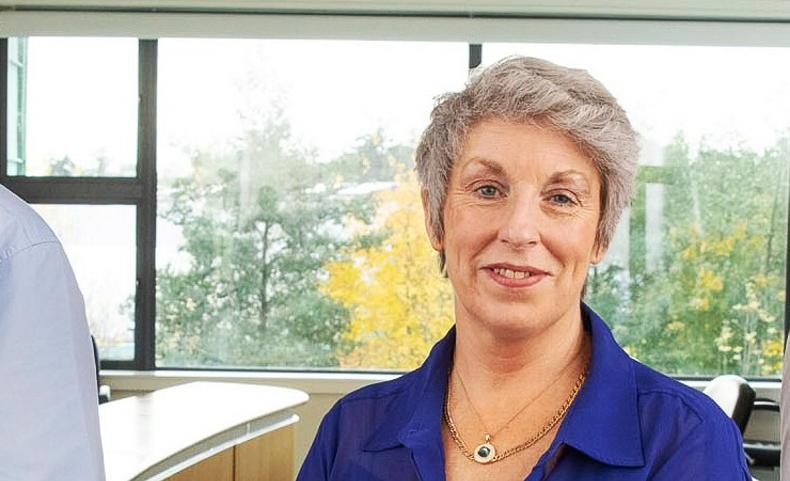The Central Applications Office (CAO) has been in the news again lately, so we thought we’d take a look at the changes that had Minister for Further and Higher Education, Research, Innovation and Science Simon Harris tweeting.
In Ireland, the CAO is the portal to many career dreams. It also has, on occasion, been where dreams are stopped in their tracks if the intended course of study becomes unavailable to prospective students who didn’t gain enough points for entry.
Well, that dream maker (and taker) has had a significant upgrade this year – one which will see many more careers being launched and, hopefully, fewer being dashed as it highlights more options for candidates to reach their chosen career.
“For the first time ever, we have the apprenticeship opportunities and the further education and training courses alongside the higher education options on the CAO website,” says Dr Fiona Maloney, who is director of further education and training support services at Education and Training Boards (ETBs) Ireland.

Dr Fiona Maloney is director of further education and training support services at the Education and Training Board.
First release
The first release of further education and training courses on the CAO portal are the post-Leaving Cert (PLC) courses, but they should be increasing to cover more further education and training courses as the portal evolves.
“It allows all school-leavers and parents, guardians and career guidance teachers – and the wider society – to see and explore the apprenticeship opportunities, as well as the further education training opportunities, alongside higher education. Prior to this, you could only view the higher education options through the CAO portal.
“It has opened it up to afford the school-leaver and all the other interested parties the myriad of provision that is available, and the alternative routes that there are to get into your chosen career or indeed on to your chosen path of further study,” Fiona explains.
Not currently accepting applications
While the CAO is not currently accepting applications for further education courses or apprenticeships, all the information on these options is available on the website and it also explains how to apply for those courses, when available.
This is still a significant step forward in the higher and further education sphere. It highlights the lesser-considered routes to a chosen career, and that colleges and technical institutes are not your only option after the LC. These options have always been available, but are increasing in popularity in recent years.

Helen Dillion is a Leaving Cert coach.
Helen Dillion, owner of Your Path Coaching, coaches school-leavers through the post-Leaving Cert decision-making process. She feels it’s a step in the right direction, given the poor marketing of apprenticeships and further education and training courses in the past.
“I’m not sure that apprenticeships and further education and training are doing enough to promote themselves to counter the weight of the CAO,” she says.
“Not many people know that. Not many people understand that they can actually get an honours degree in the likes of insurance or recruitment through an apprenticeship. You can do a masters through an apprenticeship – even a Level 10, which is a PhD,” she adds.
“I don’t think that’s emphasised enough, because any school-leaver – or parent – that I’m talking to doesn’t know that, and I’m trying to educate them. They don’t seem to be fully aware that they are available.”
Options
They will certainly know now that the options are laid out side-by-side with higher education courses.
The addition of more information on post-Leaving-Cert courses is also very welcome. These courses can be a stepping stone to a chosen college course if you didn’t get the required points at the offer stage. It’s helpful to be able to prepare yourself for an alternative route to entry if your initial plans don’t work out.
“The further education and training courses are at Level 5 and Level 6, and they tend to be a one-year full-time programme,” says Fiona. “These are shorter courses, which allow the individual to gather the skills to make them labour market-ready, or indeed progress on to higher education.”
“They may use it as a pathway to gather skills and knowledge to make them more higher education or university-ready, while getting vocational skills in the area of work that they feel they might want to go into,” she explains.
“All of the further education courses have a work placement, so it allows them the opportunity to delve [into] and find out a little bit more about this area of work to see if it is what they want and if it’s meeting their needs.”
Read more
The Leaving Cert year: stress for both students and parents
Did get the points you were after? Here's what you can do
The Central Applications Office (CAO) has been in the news again lately, so we thought we’d take a look at the changes that had Minister for Further and Higher Education, Research, Innovation and Science Simon Harris tweeting.
In Ireland, the CAO is the portal to many career dreams. It also has, on occasion, been where dreams are stopped in their tracks if the intended course of study becomes unavailable to prospective students who didn’t gain enough points for entry.
Well, that dream maker (and taker) has had a significant upgrade this year – one which will see many more careers being launched and, hopefully, fewer being dashed as it highlights more options for candidates to reach their chosen career.
“For the first time ever, we have the apprenticeship opportunities and the further education and training courses alongside the higher education options on the CAO website,” says Dr Fiona Maloney, who is director of further education and training support services at Education and Training Boards (ETBs) Ireland.

Dr Fiona Maloney is director of further education and training support services at the Education and Training Board.
First release
The first release of further education and training courses on the CAO portal are the post-Leaving Cert (PLC) courses, but they should be increasing to cover more further education and training courses as the portal evolves.
“It allows all school-leavers and parents, guardians and career guidance teachers – and the wider society – to see and explore the apprenticeship opportunities, as well as the further education training opportunities, alongside higher education. Prior to this, you could only view the higher education options through the CAO portal.
“It has opened it up to afford the school-leaver and all the other interested parties the myriad of provision that is available, and the alternative routes that there are to get into your chosen career or indeed on to your chosen path of further study,” Fiona explains.
Not currently accepting applications
While the CAO is not currently accepting applications for further education courses or apprenticeships, all the information on these options is available on the website and it also explains how to apply for those courses, when available.
This is still a significant step forward in the higher and further education sphere. It highlights the lesser-considered routes to a chosen career, and that colleges and technical institutes are not your only option after the LC. These options have always been available, but are increasing in popularity in recent years.

Helen Dillion is a Leaving Cert coach.
Helen Dillion, owner of Your Path Coaching, coaches school-leavers through the post-Leaving Cert decision-making process. She feels it’s a step in the right direction, given the poor marketing of apprenticeships and further education and training courses in the past.
“I’m not sure that apprenticeships and further education and training are doing enough to promote themselves to counter the weight of the CAO,” she says.
“Not many people know that. Not many people understand that they can actually get an honours degree in the likes of insurance or recruitment through an apprenticeship. You can do a masters through an apprenticeship – even a Level 10, which is a PhD,” she adds.
“I don’t think that’s emphasised enough, because any school-leaver – or parent – that I’m talking to doesn’t know that, and I’m trying to educate them. They don’t seem to be fully aware that they are available.”
Options
They will certainly know now that the options are laid out side-by-side with higher education courses.
The addition of more information on post-Leaving-Cert courses is also very welcome. These courses can be a stepping stone to a chosen college course if you didn’t get the required points at the offer stage. It’s helpful to be able to prepare yourself for an alternative route to entry if your initial plans don’t work out.
“The further education and training courses are at Level 5 and Level 6, and they tend to be a one-year full-time programme,” says Fiona. “These are shorter courses, which allow the individual to gather the skills to make them labour market-ready, or indeed progress on to higher education.”
“They may use it as a pathway to gather skills and knowledge to make them more higher education or university-ready, while getting vocational skills in the area of work that they feel they might want to go into,” she explains.
“All of the further education courses have a work placement, so it allows them the opportunity to delve [into] and find out a little bit more about this area of work to see if it is what they want and if it’s meeting their needs.”
Read more
The Leaving Cert year: stress for both students and parents
Did get the points you were after? Here's what you can do











SHARING OPTIONS